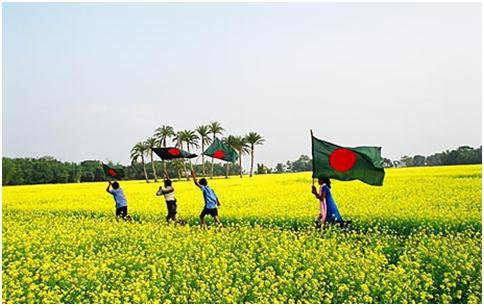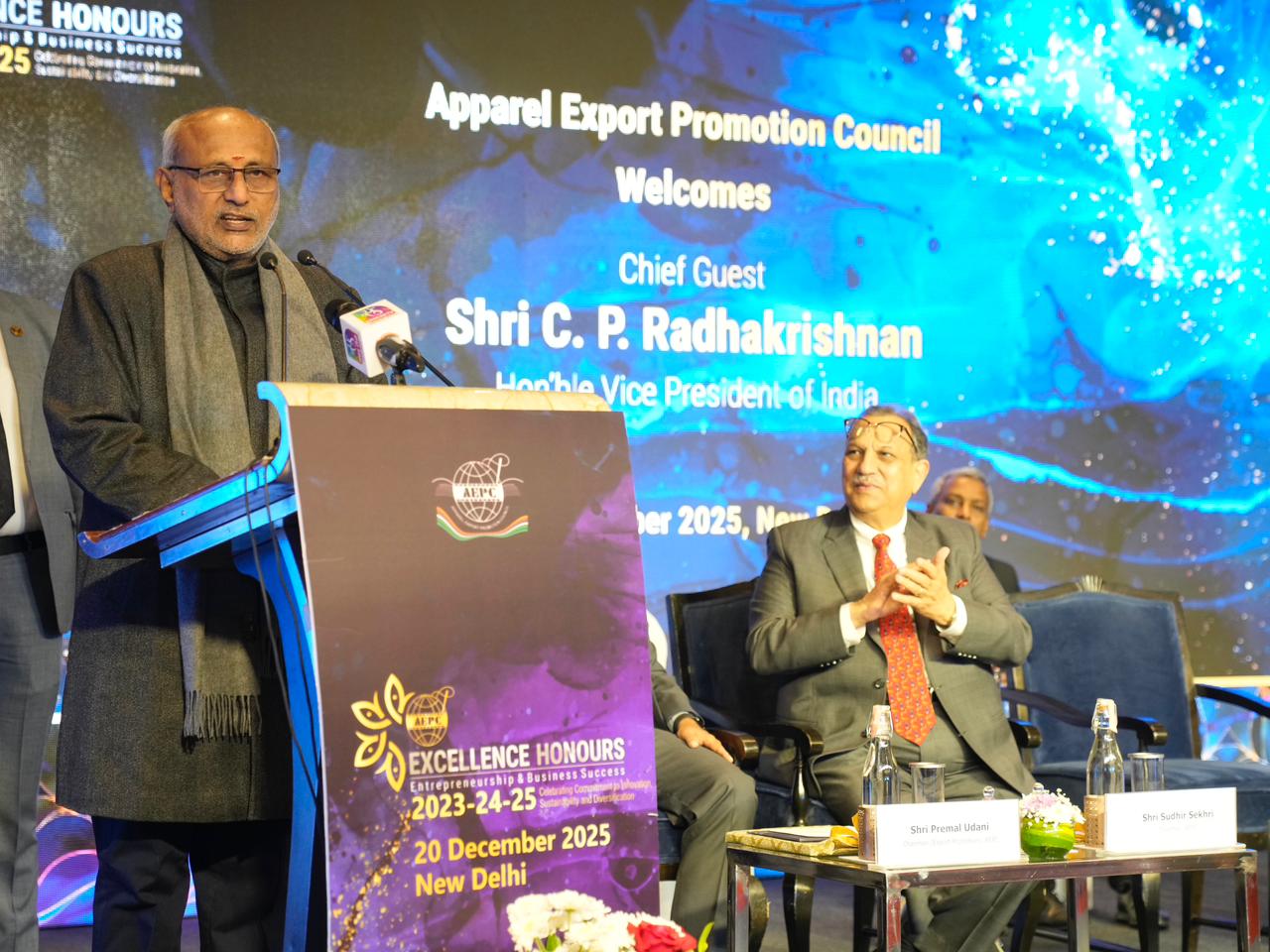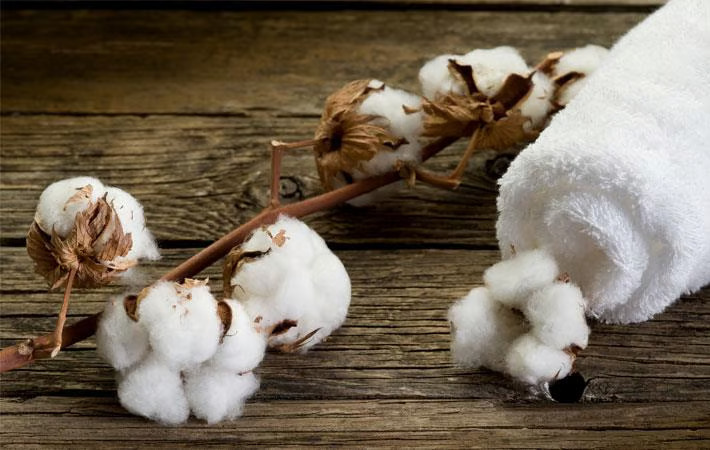FW
Indore, Madhya Pradesh-based Pratibha Syntex, which supplies to some of the top American companies including Walmart will have to pay a penalty of $1,00,000. As per the settlement reached, which was filed in Los Angeles Superior Court and has been approved by a judge, the textile company has agreed to pay the fine within 30 days.
"Pratibha Syntex engaged in illegal business practices that placed California garment companies at a disadvantage, while hurting American software companies' ability to develop new and innovative products," California Attorney General Kamala Harris said, adding, "Businesses around the globe should be on notice that the state of California will hold them accountable for stealing intellectual property to unfairly undercut their competition.
" In 2013, Harris had dragged Pratibha Syntex to court for not paying licensing fees for software it used for its business, including products manufactured by Adobe, Microsoft, and others, giving the company a significant cost advantage in the low-margin business of apparel manufacturing, shipment and sales.
Now the decision prohibits Pratibha Syntex from using unlicensed software or reproducing any part of a copyrighted software program without the permission of the legitimate copyright holder, and further require the company to perform four complete audits of the software on their computers and fix any violations within 45 days, a media release said.
In addition, Pratibha Syntex must draft an information technology policy statement regarding the use of licensed software and distribute this policy to all employees, it said.
www.pratibhasyntex.com
Bhilwara-based textile manufacturer Sangam India is looking forward to achieving a topline growth of 10 per cent in FY16 on the back of its growing denim business.
The company expects exports to contribute 30 per cent to the company's revenue this year. Sangam's long-term debt is at Rs 250 crores and it anticipates the debt-equity ratio to improve in the near future with the promoters planning to up their stake in the company to 51 per cent.
Research firm CRISIL views Sangam India as incrementally positive company and has maintained a fundamental grade of 3/5. It has raised EPS estimates and fair value and FY16 and FY17 EPS estimates from Rs 19.3 and Rs 23.7 to Rs 21.2 and Rs 25.4 on the back of higher EBITDA margin estimates. It has lowered cost of equity from 17.8 percent to 17.4 percent due to improved stock liquidity. As a result, CRISIL’s fair value has increased from Rs 115 per share to Rs 220.
www.sangamgroup.com
Trade Development Authority of Pakistan (TDAP) is organising its first textile sector specific exhibition called TeXpo 2016 from April 7 to10, 2016 at the Karachi Expo Centre, Pakistan.
Pakistan is the 4th largest producer and 3rd largest consumer of cotton globally. Textiles, is the vital manufacturing sector of Pakistan contributing nearly one-fourth of industrial value-added goods and employing almost 40 per cent of the industrial labour force. Accounting for 8 per cent of national GDP and 54 per cent of the total exports of Pakistan, the textile industry consists of a complete value chain from cotton growing to the finished products - providing Pakistan with a rare competitive edge in the world. Coined as the “Next Eleven” identified by Goldman Sachs Investment Bank and economist Jim O'Neill in a research paper, Pakistan stands as the world’s 26th largest economy in terms of purchasing power parity. Keeping the importance of its textile hub in the global trade, TDAP decided to organize the expo.
The Trade Development Authority of Pakistan (TDAP) was established in November 2006, under a Presidential Ordinance, with Ministry of Commerce, Government of Pakistan as its administrative ministry. TDAP is mandated to develop, promote, facilitate and enhance the volume and value addition of Pakistan exports.
As the premier trade organisation of the country TDAP not only strives to promote Pakistan’s business with the world but also seeks to establish a brand image for the country. The project ‘Aalishan Pakistan’ in India, was one such successful step towards introducing Pakistan as the next big thing on the business avenues of the world.
www.tdap.gov.pk
Several new trade pacts such as the one with EU and Trans-Pacific Partnership are expected boost Vietnam’s economy as many foreign investors are already showing keen interest in making investments in the country. These pacts will also let Vietnam take advantage of low tariffs, which will benefit its exports to top markets like the EU, the US, Japan and Australia.
The newly-signed FTA with the EU, for instance, will remove more than 99 per cent of tariffs on goods traded between the two economies over a period of seven years. And the TPP is expected to boost shipments within the bloc of 12 Pacific-rim nations, which accounts for 40 per cent of the global economy. Negotiations on the deal have been recently completed and it is now pending the approval of the countries' legislatures.
With manufacturing in China becoming expensive due to high labour costs and government policies, US investors' interest in Vietnam is on the rise, which was proved after more than 30 business executives seeking investment opportunities in construction visited the country. Also many leading US companies like Nike and Mast Industries are contemplating building their manufacturing activities in Vietnam.
New FDI pledges between January and November rose 1.1 per cent to $13.55 billion from the same period last year, while the additional funds for existing projects were estimated at $6.67 billion in the period, according to the General Statistics Office.
However, experts are of the opinion that while Vietnam is emerging as the next hot investment destination, its government must resolve issues around customs and tax procedures and introduce investor friendly policies.
In its recent Outlook Update, Moody’s Investor Service lowered the 2016 growth forecast for the apparel and footwear industry to the 3-5 per cent range from 5-7 per cent in 2015, moving from a positive outlook to a stable one. Analysts also lowered their 2015 constant-currency growth forecast from 7-9 per cent.
“While the hedges taken this year will partially protect margins, the strong US dollar will continue to have negative foreign currency translation effects on the industry’s gross profits for the rest of this year,” said Scott Tuhy, a Moody’s Vice President, Senior Credit Officer.
Once 2015’s hedges have rolled off next year, provided foreign exchange rates stay the same, Moody’s said companies will experience a roughly 40 basis point drop in operating margins because of higher sourcing costs at current exchange rates. Revenue growth for the sector, however, will remain a moderate 4-6 per cent through next year.
“Apparel companies will also continue to benefit from low cotton and oil prices this year, which could help the industry’s operating margins,” Tuhy added, though negative currency effects have offset most of those benefits. When it comes to retail, he said, “The strong dollar has discouraged spending by tourists to the United States, impacting sales at brands such as Ralph Lauren and Calvin Klein, dragging on apparel sales.” And those brands are blaming part of their lackluster performance on reduced department store spend.
Sales for department stores have fallen 24 percent since 2002 and more and more apparel companies are realigning their focus and growing their online and direct-to-consumer offerings. Nike has benefitted from a shift away from department stores—the retailer has opened more of its own branded stores, and according to Moody’s, grew direct-to-consumer sales by 25 per cent in fiscal 2015 to more than $6.6 billion, or close to 22 per cent of total sales. VF Corp also grew its direct-to-consumer sales by 11 per cent in the first half of fiscal 2015 to 25 per cent of its total revenue.
“We anticipate apparel companies, particularly big names like Nike, Ralph Lauren, VF Corp and PVH, to grow sales and expand operating margins through their organic growth initiatives, which will be more recognizable in the long run without FX noise,” Moody’s said.
Nike, VF Corp and Hanesbrands have been the primary revenue and income growth drivers for the apparel sector this year, and they all sell athletic apparel, which points to the continued trend toward athleisure-focused sales. The demand for athletic wear has weighed a bit on denim, but Moody’s said denim sales from companies like PVH and Levi’s will recover. E-commerce sales in the apparel sector should grow 15.3 per cent this year, 14.2 per cent next, and online penetration will reach 16 per cent of total sales by next year. Despite China’s currency fluctuations and its economic slowdown, Moody’s said the country will still be a big growth opportunity.
www.moodys.com
The International Cotton Advisory Committee expects lower cotton production next year owing to low values. It anticipates China's output to hit a 12-year low.
The group has warned that "low prices are expected to persist" for the rest of the 2014-15 – as it cut its forecast for the season-average value, as measured by the Cotlook A index, by 4 cents to 68 cents a pound. The low prices – the weakest in six years – will, in making cotton less appealing to growers, cut world plantings for 2015-16 by 6 per cent to 31.6 million hectares.
"Cotton is likely to be much less attractive to plant due to falling prices while prices for competing crops such as corn and soybeans have recovered from price downturns last September and October," the committee said. Chinese output will slump by some 700,000 tonnes to 5.7 million tonnes (26.2m bales), the lowest since 2003-04. While the committee did not detail the reasoning behind this estimate, it follows subsidy reforms which have prompted a particularly steep slide in China's cotton price - which plunged by nearly 60 per cent to 13,605 yuan a tonne in the last nine months of 2014, according to the China Cotton Association's price index.
The drop in China's production will, for a second successive season, keep at second place in the world cotton production table behind India, whose own output will fall by some 300,000 tonnes to 6.5m tonnes. Cotton area in the US, meanwhile, the top cotton exporting country, will drop by 10 per cent to 3.6m hectares. US production will fall by 7 per cent to 3.3 million tonnes (15.2m bales). Nonetheless, production will in 2015-16 fall only narrowly behind consumption, whose growth will be constrained to 2 per cent.
www.icac.org
Of the 2,090 textile processing units identified in Erode, Namakkal, Salem and Karur districts, 1,007 units have given their consent to join the integrated textile processing park that would have a common effluent treatment plant (CETP) facility set up at a cost of Rs 700 crores. Discharge of untreated industrial effluents into the Cauvery, Bhavani and Amarvati rivers has long been a problem. The CETPs would be set up in the four districts to prevent further pollution. The objective was to establish integrated textile clusters and bring in units under one roof in their respective areas so that effluents can be treated in CETPs.
The proposed cost for establishing CETPs along with power generation units have been worked out at Rs 1,118 crores for the Erode (Rs 784 crores) and Namakkal clusters (Rs 334 crores). The proposal is yet to be prepared for Salem and Karur clusters.
Once the feasibility report is submitted, the textile dyeing clusters should establish a special purpose vehicle, purchase land and execute the shareholders agreement. Later a detailed project report would be prepared with details including effluent sampling and analysis and technology options for CETPs. Other stages include an environmental impact assessment, financial closure and finally implementing the projects, operations and maintenance.
Knitwear exports from Tirupur have increased by 15.52 per cent in rupee terms and 15.94 per cent in terms of foreign currency. Backed by favorable cotton yarn prices, a strong infrastructure, pro-active players and buyer confidence, the Tirupur hub has set a target of reaching a Rs one lakh crore turnover by 2020.
China, Bangladesh and Vietnam are the major competitors for Tirupur exporters. Tirupur is the first textile cluster in the country to have the zero liquid discharge technology. Known as the knitwear capital of India, it accounts for about 50 per cent of the total knit garment production of the country and contributes 44.29 per cent to the total knits export basket.
The focus of the industry is now on non cotton based fabrics such as viscose, polyester, polymate etc, as the hub is now predominantly catering only to the summer/spring market. Once blended fabrics are added to the profile, the industry is expected to see a significant jump in business as buyers can explore options for the autumn/ winter market segment too. This will mean a steady inflow of business throughout the year.
Tirupur has about 800 garment manufacturing and exporting firms and 1,200 merchant exporters.
Textile conglomerate Alok Industries posted a net loss of Rs 242.2 crores for the quarter ended September 30, 2015, whereas the net profit was Rs 45.36 crores for the quarter ended September 30, 2014. Total income for the quarter ended September 30, 2015, stood at Rs 3235.53 crores whereas the same was of Rs 3790.48 crores for the quarter ended September 30, 2014.
Short term borrowings were up 12.7 per cent to Rs 6810 crores during the quarter ending September 30, 2015, over borrowings of Rs 6044 crores in the quarter ending March 31, 2015. However, long term borrowings fell 19 per cent to Rs 5832.7 crores from Rs 7223.5 crores during the same period.
Alok has a dominant presence in the cotton and polyester segments. It was established in 1986. The first polyester texturising plant was set up in 1989. Over the years, it has expanded into weaving, knitting, processing, home textiles and garments. It has integrated backward into cotton spinning and manufacturing partially oriented yarn through the continuous polymerisation route.
It has evolved into a diversified manufacturer of world class home textiles, garments, apparel fabrics and polyester yarns, selling directly to manufacturers, exporters, importers, retailers and to some of the world’s top brands.
www.alokind.com/
"Many western brands, which sourced from the country owing to low wages and other benefits, moved away to other sourcing destinations. And the conclusion of recent TPP agreement would further move sourcing to Vietnam, leaving Bangladesh to think and act fast amid rising competition"

After incidents like the Rana Plaza building collapse and fire calamity in Bangladesh’s apparel industry that claimed several lives, there was a question mark on its safety and compliance eligibility. Many western brands, which sourced from the country owing to low wages and other benefits, moved away to other sourcing destinations. And the conclusion of recent TPP agreement would further move sourcing to Vietnam, leaving Bangladesh to think and act fast amid rising competition.
Strengthening raw material base

Bangladesh has been a leading global exporter of readymade garments (RMG) and earns around 76 per cent of its foreign exchange through exporting textiles and readymade garments. Presently, almost 100 per cent export-oriented knitted fabrics are being produced in the country but more than 60 per cent of the export-oriented woven fabric is imported making its RMG expensive. Also other raw material requirements such as 100 per cent of dyes, chemicals, spare parts and machinery are also imported. So in order to become competitive against its rivals such as Vietnam and Cambodia, Bangladesh will have to look into strengthening its raw material base to offer better price points.
Another aspect, is value addition. Bangladesh should simultaneously try to increase the export price by adding value to its products. Another most important point that can bring down costs significantly is the eliminations of middleman.
Directly dealing with the importers
The three-way process that involves transaction between the manufacturer to middleman and then middleman to importer leads to significant rise in costs. Now, while manufacturers are trying to reach out to suppliers directly skipping the agents on one hand to bring down cost on raw material, on the other they are directly negotiating with the importers to offer competitive price-points by eliminating the middleman.
While the process has begun, industry experts feel that the manufacturing companies need to invest in improving skill-sets of their marketing executives and a marketing strategy to deal with overseas buyers directly. The sector has hired many Sri Lankan, Indian and Pilipino production and quality control executives to gain confidence of the buyers. In fact, Bangladesh is relying on buyers' agent for orders. However, they need to train domestic employees to become the trusted marketing agents.
The country’s RMG exporters, instead of completely depending upon the traditional importing markets such as the US and EU must also explore markets like Japan, Australia, Russia, Eastern Europe, the Nordic countries, Central Asia, Africa and the Middle East to establish their presence in the global market. Its time, serious investment and effort is made to combat the competition.
According to a recent World Bank study, in the event the local RMG industry in Bangladesh is able to capture the attrition of about 20 per cent of China's apparel exports, Bangladesh's export volume will increase by at least $29 billion creating 5.4 million new jobs and 13.5 indirect employments.












